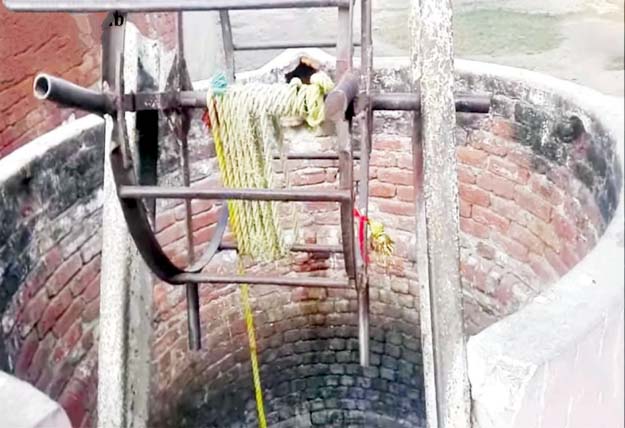Historical legends: Is the myth of Pooran da Kho just that?
The well is associated with ascetic named Pooran Bhagat, son of Raja Salawan, who ruled an area in 2nd century BC

PHOTOS: EXPRESS
Owing to its antiquity and the interesting folklore attached to it, people from various parts of Pakistan, and sometimes India, come to visit it.
As there are no inscriptions or any authentic historical record of the well, people believe in the legend that the well is associated with an ascetic named Pooran Bhagat, the son of Raja Salawan, who ruled the area in the second century.
“According to the legend, Pooran was born to Raja Salawan and his wife Rani Achran. Soon after his birth, however, fortunetellers and priests advised Salawan to send Pooran into exile for 12 years, otherwise, he would lose his wealth and power,” Kalyan Singh, a professor at the Government College Lahore, told The Express Tribune.
“The raja complied and sent Pooran – under the care and supervision of several servants – to live in the forest. It is believed that the Raja did not even see the face of his son.”
While Pooran was being brought up in the forest, Raja Salawan married a young girl named Luna who hailed from a lower Hindu cast. She was apparently unhappy with the marriage.
Per the legend, when Pooran – who grew up to be a handsome young man – returned to the palace, he fell in love with his young stepmother, Luna. She even offered to marry him, but he refused because of the socially-unacceptable nature of their romance.
“The refusal angered Luna, who took revenge on Pooran and told Raja Salawan that his son tried to harass her,” professor Singh explained. “When Salawan heard about the unimaginable story, he became furious and ordered his soldiers to kill Pooran.”
It is believed that some of the soldiers did not want to kill the young prince, so they amputated his limbs and left him near a well in the forest. Others say that the young prince’s legs and arms were cut off and he was thrown into the well.
Another legend says that Baba Gorakhnath, a well-known Hindu saint and yogi of the time, rescued Pooran with the help of his miraculous powers and made him a disciple. In this way, Pooran Bhagat later became popular as Pooran yogi.

“Some versions of the legends also say that since Raja Salawan and Luna were childless, they were told to visit a yogi who lived in the forest to pray for a child. Not knowing the yogi’s true identity, Salawan and Luna visited Pooran, where they were shocked to see him,” professor Singh continued. “On that occasion, Luna admitted that she lied about Pooran and sought his forgiveness.”
Pooran not only forgave Luna and his father, but he also prayed for them to be blessed with a child. He, however, did not return to the palace and spent the rest of his life in the forest as an ascetic.
Believing in the legend, many childless couples visit Pooran’s well where wives perform a ritual by taking a bath with the well water. They also tie their scarfs to a tree near the well and pray for a child.
Professor Kalyan Singh also explained that there are two other wells in Punjab that are said to be associated with Pooran Bhagat’s name, while there is also one in Sindh which people claim to be associated with the legend of Pooran. However, the one in Sialkot is the only one with which the legend has been associated for many decades.
Singh also said that the well was repaired during Maharaja Ranjeet Singh’s rule and Nanak Shahi bricks were used to rebuild it. However, looking at the well’s sturdiness, it is quite possible that it had been repaired several times before Ranjeet Singh’s rule too.
Shedding light on the history of the well, Director Archaeology Muhammad Afzal Khan said that the stories surrounding Pooran’s Well are probably just folklore because the structure does not seem to be older than 200 years.
“Before the partition of the Indian subcontinent, Sialkot was a Hindu and Sikh-majority area. At the time, several Havelis and wells were constructed and it is possible that the so-called Pooran’s Well was also built by someone during the reign of the Sikhs,” Afzal Khan said. “However, to find out more about the well, no steps, digging or research have ever taken place.”
Published in The Express Tribune, August 4th, 2019.



















COMMENTS
Comments are moderated and generally will be posted if they are on-topic and not abusive.
For more information, please see our Comments FAQ